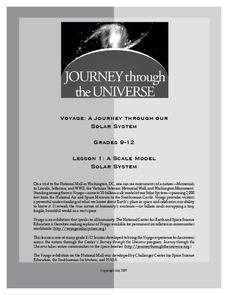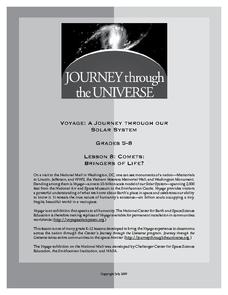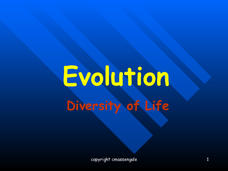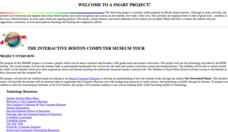Journey Through the Universe
A Scale Model Solar System
Between the time scientists discovered Pluto and reclassified it as a dwarf planet, it did not even make one full revolution around the sun. In two activities, scholars investigate scale models and their properties. Pupils find that it...
American Museum of Natural History
Journey to Deep Sea Vents
Take a deep dive into oceanography. The online interactive allows for learners to board a submersible to dive to the bottom of the ocean to investigate sea vents. On the way down, individuals see different marine life at different...
Journey Through the Universe
Going through a Phase
Ignore the full moon, it's just a phase. Young scholars observe and record the moon during a full cycle before learning to predict future phases. Then the instructor leads a discussion on the other solar system objects that also go...
Journey Through the Universe
Comets: Bringers of Life?
Young scientists investigate the elements found in our solar system and then construct a model of a comet. They apply their new knowledge to the formation of the solar system.
Curated OER
The Art and Science of Impressionist Color
Discover Impressionist painting as students investigate the 19th century combinations of colors characteristically used. Students experiment with their own paintings, utilizing primary and secondary colors.
Montana Natural History Center
Studying Grassland Ecosystems
At first glance, grassland ecosystems might seem dull and uninteresting, but once you start to explore it's amazing the things you'll find! Through this series of engaging lessons, activities, and experiments, elementary students examine...
It's About Time
Volcanic Landforms
Did you know the word volcano comes from the name of the Roman god of fire, Vulcan? During this activity, scholars make a topographic map, interpret topographic maps, and infer how lava will flow based on their analysis.
Biology Junction
Evolution – Diversity of Life
Scientists noticed animals with backbones share similar bone structure despite having different forms, such as fins, arms, and wings. Young scientists gain an appreciation for evolution by understanding the history of the theory. They...
American Museum of Natural History
Ask a Scientist About Our Environment
Scientists respond to 26 question posed by learners. These experts answer in easy to understand language, include photos to illustrate the issue, offer suggestions for how young people can make a difference, and supply links to resources...
Curated OER
Crazy for Cubes: Art and Science
Learners discuss Sol LeWitt and conceptual art, then analyze the differences in expressing a concept through model-based inquiry and aesthetic art criticism. They develop a geometric, scientific, or mathematical concept, then create an...
Curated OER
National Museum of the Pacific War
Students examine the role of science and technology in World War II. They discover how some inventions have changed to meet society's need after the war was over. They visit the museum to complete the lesson plan.
Curated OER
Then, Now, and Tomorrow
Students will use this unit to investigate the past, present, and future of the architecture and plan of New York's Lower East Side. Students will research the history of the Lower East Side neighborhood in photographs used from the...
Curated OER
Carrot Seed Lesson Plan
Learners create a seed museum. In this early childhood lesson plan, students identify various seeds and the plants the seeds will grow into. Learners write a description of the plant, illustrate the plant and create a seed museum in...
Curated OER
2105
Students read excerpts from Jon Scieszka's novel, 2095, prior to presenting their vision of the future in a creative project accompanied by written explanation. They design a museum exhibit which shows a scene from a science fiction book...
Curated OER
You Have All the Answers
Students explore the concept of theories in science while examining the theory of evolution. They conduct research and participate in a discussion about current issues in science culminating in the creation of question and answer pamphlets.
Curated OER
The History of Climate Change
In this science worksheet, students gather in-depth information dealing with climate change over the next century. They analyze the grid to determine the average time difference between peaks in the temperature history for the last...
Curated OER
A Museum as Time Capsule
Students focus on museum artwork and artifacts as resources to study history and geography.
New York City Department of Education
Egypt
This six-week unit encompasses all subjects with a focus study on world history and the development of ancient civilizations. As gifted and talented students dive into the interesting yet challenging topic of Egypt, they think critically...
Curated OER
History Close to Home: Creating Your Own Special Museum
Students create their own museum exhibit. In this museum creation lesson plan, students research their local history so they can decide on a theme for their exhibit and what objects they will use in order to design a museum exhibit. A...
University of Rhode Island
The Interactive Boston Computer Museum Tour
Fifth graders use the Internet to use an interactive program which helps them explain the Internet better. They take a tour of a computer museum and focus on how the Internet works through an exhibit.
Curated OER
Global Warming WebQuest-Economist
In this global warming worksheet, students complete six short answer questions about the global warming impact on the economy. Students must have prior knowledge or complete research to answer these questions.
Curated OER
Global Warming Webquest- Energy Expert
In this energy and global warming worksheet, learners complete 6 short answer questions about energy sources on our planet. Students must consider where we get energy for electricity and what sources we use for fuel.
Magic of Physics
Wave Machine
Three main factors determine the wave height experienced in the ocean. Scholars use a virtual simulator to alter wind speed, fetch, and duration. Each combination creates a unique wave measured in significant height.
Museum of Science
Terrarium
Make a premium terrarium. Learners create a miniature terrarium to study ecosystems. They use a clear container, along with rocks, soil, moss, leaves, woodland plants, earthworms, and bugs to construct their terrariums.

























